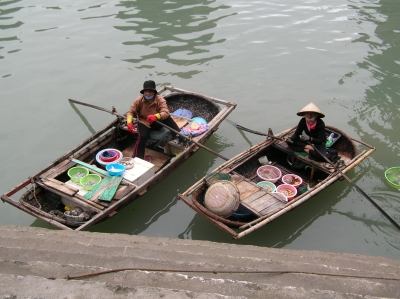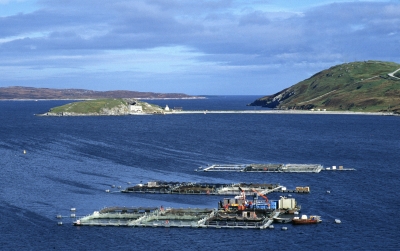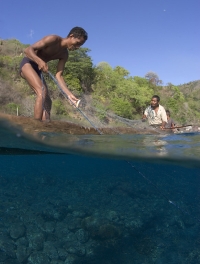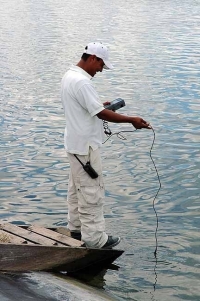Impact des hydrocarbures sur les pêcheries et sur l'aquaculture (en anglais)
Impact of Oil on Fisheries and Aquaculture
Oil spills can cause damage to fishing and aquaculture resources by
- physical contamination,
- toxic effects and
- by disrupting business activity.
The nature and extent of the impact of an oil spill on seafood production depends on the characteristics of the spilled oil, the circumstances of the incident and the type of fishing activity or businesses affected. In some cases effective clean-up and protective measures can prevent or minimise damage.
Thus, a variety of factors combine to define the character of a particular oil spill and the possible effects on sensitive resources in its path. Some incidents may lead to considerable impact on seafood resources whilst others may be of little or no consequence. Neither spill volume nor any other single factor is a reliable yardstick for predicting or measuring damage and a careful examination of many facets of an incident is necessary in order to reach correct conclusions. Precise prediction of recovery is equally difficult.
Physical contamination
Oil can foul the boats and gear used for catching and cultivating commercial species. Such oil contamination is then easily transferred to the catch. The handling of many seafood products in bulk means that it is seldom practical to locate and remove the oiled specimens. Flotation equipment, lift nets, cast nets, and fixed traps extending above the sea surface are more likely to become contaminated by floating oil, whereas lines, dredges, bottom trawls and the submerged parts of cultivation facilities are usually well protected, provided they are not lifted through an oily sea surface, or affected by sunken oil.
Especially vulnerable are shoreline cultivation facilities, such as racks used for the cultivation of oysters. They are usually located in the middle or lower shore, where oil often strands. Shellfish and cultivated animals kept in cages or tanks are usually unable to avoid exposure to oil contaminants in the water, and so effects such as tainting and mortality may be worsened. The presence of oil pollutants may significantly add to the stresses already imposed by keeping animals in artificial conditions. If, for example, the stocking density or the water temperature in a fish farm is unusually high, there is a greater risk of mortality, disease or growth retardation occurring as a result of oil contamination.
Toxic effects
As a generalisation, the toxic effects of oil on marine life depend on the duration of exposure and oil concentration in the environment. Adult free-swimming fish, squid, shrimp and wild stocks of other commercially important marine animals and plants seldom suffer long-term damage from oil spill exposure. This is because oil concentrations in the water will only rarely reach sufficient levels to cause harm.
The greatest impact is likely to be found on shorelines where animals and plants may be physically coated and smothered by oil or exposed directly to toxic components in the oil. The tidal rise and fall exposes a band of the shoreline environment to oil pollution. Edible seaweeds and sea urchins are examples of shoreline species that are especially sensitive to smothering and oil toxicity. In addition to mortality, oil may cause more subtle longer-term damage to behaviour, feeding, growth, or reproductive functions.
Economic impact
The most serious threat of oil spills to fisheries and aquaculture activity is the economic loss arising from business interruption. Oil on the water and the application of temporary fishing and harvesting bans may prevent normal production, or a loss of market confidence may occur leading to price reductions or outright rejection of seafood products by commercial buyers and consumers. In extreme cases the mere hint of oil contamination can affect the marketing of high-price luxury seafood even if the produce is proven to be taint-free after testing by trained sensory panels and contaminants are at background levels after exhaustive chemical analysis.

Photo: Live Seafood trade in Vietnam. Kathleen Reaugh / Marine Photobank



